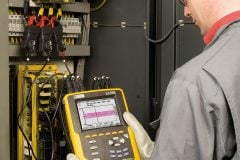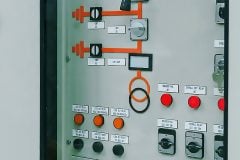
When standard lighting fails…
Lighting is defined as emergency lighting when it is intended for operation when standard lighting fails. Emergency lighting must be powered by an independent energy source (typically a central power supply system) and is classified by the UNI EN 1838 standard into:
While safety lighting is governed by special regulatory, technical and legislative requirements, both in terms of construction and compliance, for backup lighting it is necessary to refer to the general installation rule, and the decision to adopt it or not is typically a financial one.
1. Back-up lighting
In the case of back-up lighting (or more generally back-up services), identifying the level of reliability to adopt and the subsequent implementation of lighting in terms of plant engineering solutions is inevitably left entirely to the discretion of the system designer and customer.
If a static UPS system is used to power back-up lighting, it is necessary to determine the autonomy needed to continue doingthe same activity and the same tasks that were being performed while the standard lighting was functioning, without significant changes. The level of illumination provided by backup lighting must generally be at least equal to that provided bystandard lighting, as if this were not the case it would be impossible to continue the previous activity.
One typical case where it is possible to have back-up lighting which is dimmer than standard lighting, is when back-up lighting is only used to finish off work in progress, and not to continue indefinitely (for example non-automated operations before data centre equipment is shut down).
It is also necessary to consider the peculiarities of the bulbs normally used in lighting fixtures, in order to correctly size a UPS used as a back-up power source. For example rephased linear fluorescent bulbs, used widely for reasons of efficiency in lighting systems, are characterised by high inrush current.
2. Safety lighting
The purpose of safety lighting is to provide an adequate level of safety to people who find themselves without standard lighting, and to therefore prevent accidents or dangerous situations from occurring. It is not lighting that can be used to carry out ordinary tasks, but functions only to ensure the safe mobility of people.
For the power supply of safety lighting it is necessary to use a central power supply system (CPSS), e.g. a UPS that also meets the additional requirements of standard EN 50171, and the related circuits must be independent from any other circuits (standard IEC 60364).
In a data center, safety lighting can be provided in the form of self-powered equipment, however sometimes it is more convenient to use the backup CPPS of the CED to supply power to safety lighting as well.
In this case autonomy time must be adapted and it is also essential that:
- A central power supply system is used rather than a straightforward UPS;
- Back-up usage does not compromise safety;
- Selectivity is guaranteed;
- Mutual interference of loads is verified interms of electrical power availability.
Inside a Google data center (VIDEO)
Cant see this video? Click here to watch it on Youtube.
Reference: Planning and design for a data centre – ANGELO BAGGINI; Lecturer at the Faculty of Engineering, UNIVERSITY OF BERGAMO – EATON










